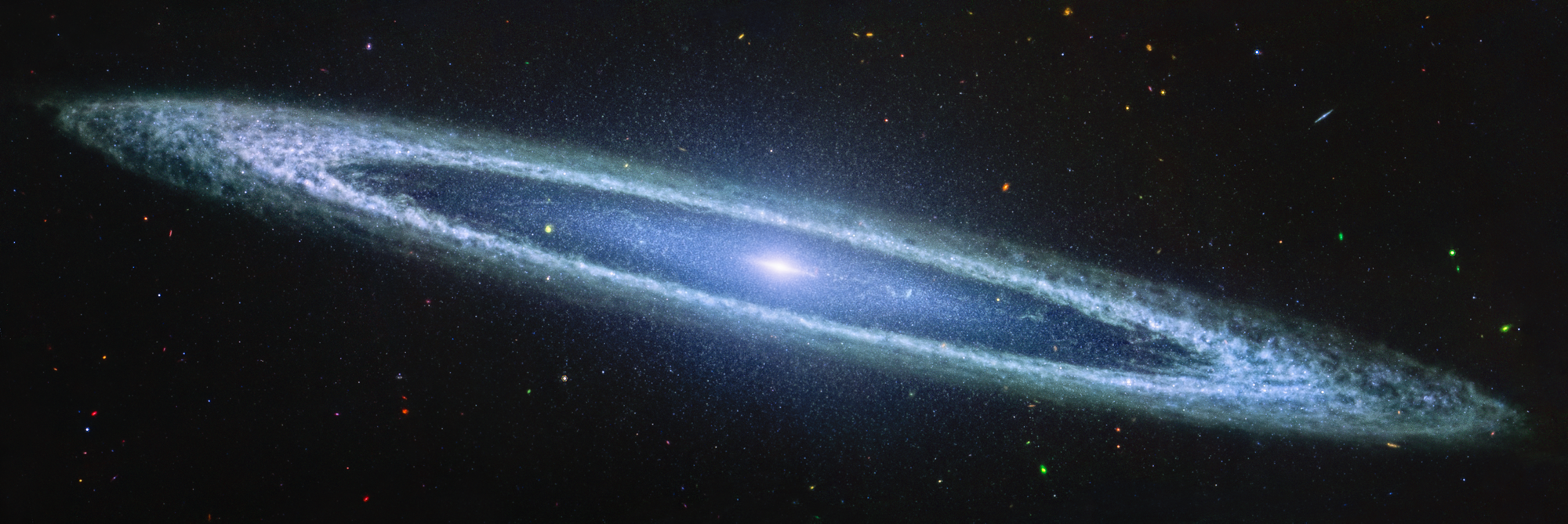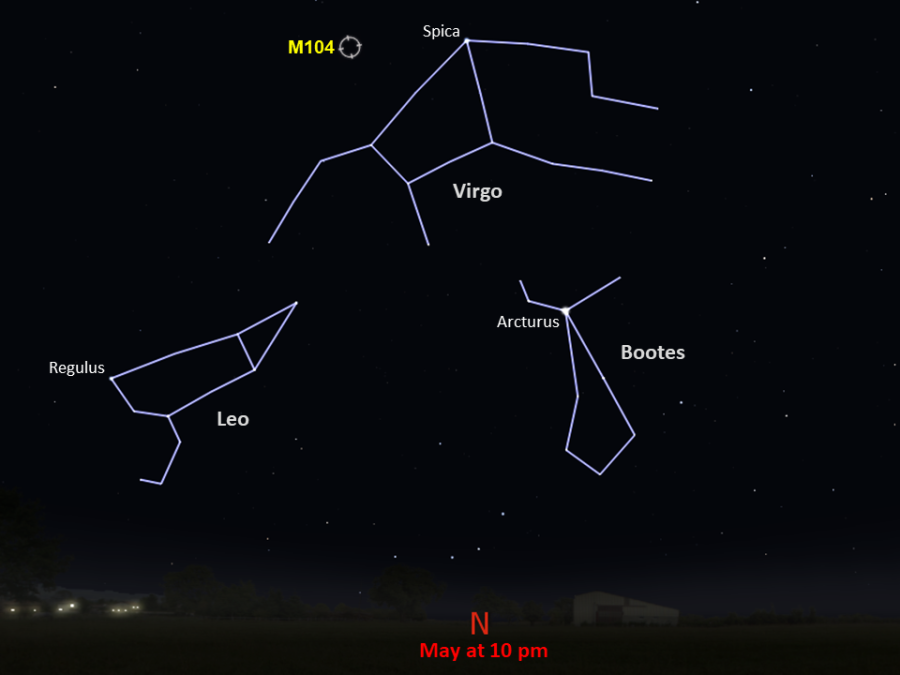Sombrero Galaxy (Messier 104 or M104) is one of the galaxies featured in modern astronomical studies due to its spiral structure and distinct morphological features. It gets its name from its appearance, which resembles a traditional Mexican "sombrero" hat when observed. This look results from the combination of the galaxy's bright central bulge and its planar dust lane.

AI-Visualized Image of the Sombrero Galaxy.
Discovery and History
The Sombrero Galaxy was first observed in 1781 by French astronomer Pierre Méchain and was later added to Charles Messier's catalog in 1784 as M104. However, this galaxy did not appear in the first editions of the Messier Catalog.
In the 20th century, spectroscopic measurements conducted by Vesto M. Slipher revealed that the galaxy is rotating and moving away from Earth. These findings served as references in fundamental cosmological studies, including Edwin Hubble’s galaxy classification and the theory of the expanding universe.

Sombrero Galaxy Captured by the James Webb Space Telescope. (NASA.)
Location and General Features
Located in the direction of the Virgo constellation, the Sombrero Galaxy is approximately 29 million light-years (8.9 Mpc) away. With an apparent magnitude of +8.0, it is bright enough to be observed with small telescopes. Due to its inclination of about 84 degrees, it is seen almost edge-on, allowing clearer observation of its structural components.

Sombrero Galaxy Position. (NASA.)
Its main physical parameters are as follows:
- Type: SAa (early-type spiral galaxy)
- Diameter: Approximately 50,000 light-years
- Number of Stars: About 800 billion
- Apparent Magnitude (V): +8.0
Structural Features
Central Bulge
The central region of the Sombrero Galaxy has a large and bright bulge. This spheroidal structure is primarily composed of older star populations. Such large bulges may be the result of past mergers or internal dynamical processes.
Dust Lane and Disk Structure
The dark dust lane observed along the galaxy disk consists of interstellar dust and generally lies in the foreground of the galactic plane. Infrared observations indicate a limited amount of star formation in this region. The disk contains abundant gas and dust, but the star formation rate is relatively low.
Halo and Globular Cluster System
Studies conducted with the Hubble Space Telescope (HST) and other instruments have shown that the galaxy possesses over 2,000 globular star clusters. This number is significantly higher than that in the Milky Way Galaxy and suggests that the Sombrero Galaxy is more massive.
Central Supermassive Black Hole
Observations in X-ray and radio wavelengths indicate the presence of a supermassive black hole at the center of the Sombrero Galaxy. The size of this black hole is quite large relative to the total mass of the galaxy. The existence of this black hole has been confirmed through the dynamics of surrounding gas and spectroscopic analyses.
Evolutionary Process and Galaxy Classification
X-ray and radio observations show the presence of a high-mass black hole at the center of the Sombrero Galaxy. The presence of this black hole has been confirmed through gas motion and spectrum analyses.
Observational Studies and Spectral Features
Spectral analyses show that the galaxy contains stellar populations with varying ages and metal content. The center is dominated by older, metal-rich stars, while the disk is home to younger, metal-poor stars. Additionally, studies based on Hα and [O III] emission lines have revealed the presence of low-level nuclear activity (LLAGN) in the core.
The Sombrero Galaxy contributes to research in galaxy morphology and evolution through the diversity of its structural components and physical characteristics. Its central bulge, number of globular clusters, black hole, and dust lane offer valuable insights into galaxy formation and dynamic processes. With future high-resolution telescope observations, more data is expected to be obtained about the origin and evolutionary process of this galaxy.


